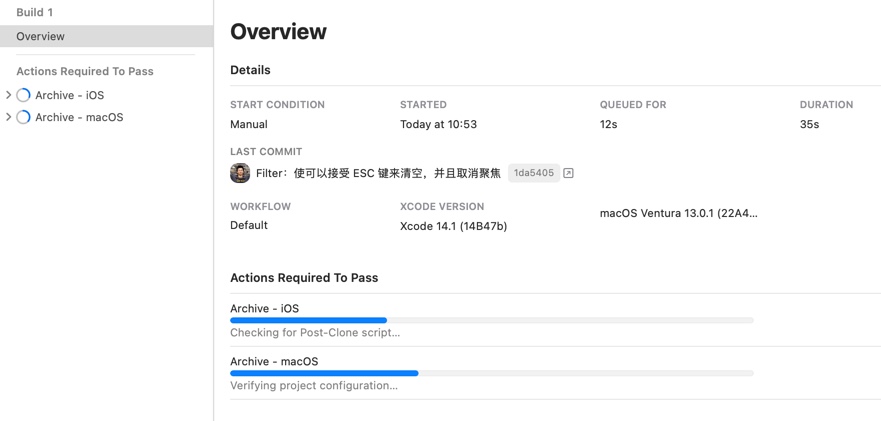

- Fastlane macos install#
- Fastlane macos update#
- Fastlane macos manual#
- Fastlane macos android#
- Fastlane macos code#
Fastlane macos install#
They are different (shared | specific, docker | shell … etc., all the details are in the documentation) and you can install it on your server so that, firstly, you have full control over the environment (especially if it’s a shell runner) and, secondly, do not pay for GitLab :).
Fastlane macos code#
Actually GitLab-runner is a thing that will execute the code defined in the. What follows is a simple description of what was done and why.įor iOS app development, you need to use your specific runner, which allows you to execute any scripts on the server. This could no longer go on and we decided to fully automate the entire process. And after that, the same person updates dSYM files for Сrashlytics service. This was usually done by a developer who manually launches (if he does not forget) UNIT / UI tests, then builds the application, signs it, does some other black magic, and uploads the build to Testflight. I must say that before this situation we have been releasing applications manually for a long time. But it’s extremely difficult to analyze the reason without debug symbols. You can find out about the fact of an error, the number of crashes, etc. What went wrong? Nothing special - we forgot to upload the dSYM file and it was impossible to get readable information about the failure.
Fastlane macos update#
The update was 2 weeks ago so W̶h̶a̶t̶ ̶a̶ ̶T̶e̶r̶r̶i̶b̶l̶e̶ ̶F̶a̶i̶l̶u̶r̶e̶ why then we do not know anything about the crashes? Crashlytics were set up and we expected to be notified about all errors and quickly respond to them, but this time all the notifications (Slack, mail) were treacherously silent. The story started with the fact that users (!!!) began complaining that the application was crashing. If you are too lazy to read or you had to provide the finished CI yesterday, then you can find all the necessary files in our repository.
Fastlane macos manual#
Here is a story about the benefits of automation and the disadvantages of manual work that a computer should do. Move your google_play_key.This has never happened before, and here again …

There is no simple email + password login mechanism for the Google Play Console API, so you will have to follow these quite elaborate instructions to get a google_play_key.json file. # message: "Successfully deployed new App Update."įirst step is to setup authentication. # This block is called, only if the executed lane was successful

# You can define as many lanes as you want # You can also use other beta testing services hereĭesc "Deploy a new version to the Google Play" If you check your project’s Git working copy it now includes the following files and folders:ĭesc "Submit a new Beta Build to Crashlytics Beta" The optional scheme input can be skipped by hitting Enter - and that’s it. For now decline this with n (as we will do this later when we Create the app remotely). If the login is successful it will ask if you would “like to create your app on iTunes Connect and the Developer Portal?”. (Entering this will (of course) trigger your two-factor-authentication that you also have to enter on the command line)īecause of an incompatibility of Fastlane with Cordova iOS projects it currently can’t automatically get your app identifier (called bundle_id in iOS land) and you have to input it manually: for this example. Then it asks for your Apple ID that will be used to log in to iTunes Connect and the associated password, which it will store in your system’s keychain via fastlane’s credential manager. It also can’t automatically find the “project file”, so enter platforms/ios/FastlaneIonic.xcodeproj (Replace “FastlaneIonic” with the actual file name that depends on the name you set in your config.xml - best check for the file name in the file system).

As we don’t run this in a default iOS project as Fastlane expects, it can’t automatically detect the platform and will ask you if this is actually an iOS project, which you confirm with y. Run fastlane init in your project folder (where your config.xml and /platforms directory exist). Be aware that this will trigger some errors as we are doing this in a non-standard way. Initialization of the actual Fastlane installation in your project happens by running fastlane init on the command line. Now that fastlane is installed you can initialize it into your Ionic project: Initialize with fastlane init
Fastlane macos android#
First published: August 2017 Initialize Fastlane for your (Cordova) iOS and Android apps


 0 kommentar(er)
0 kommentar(er)
